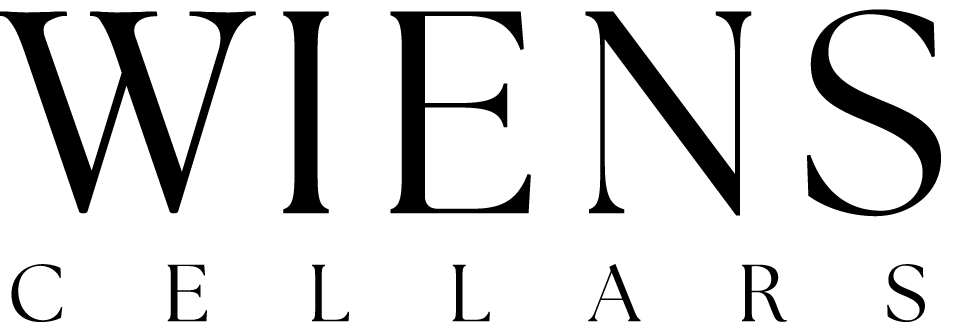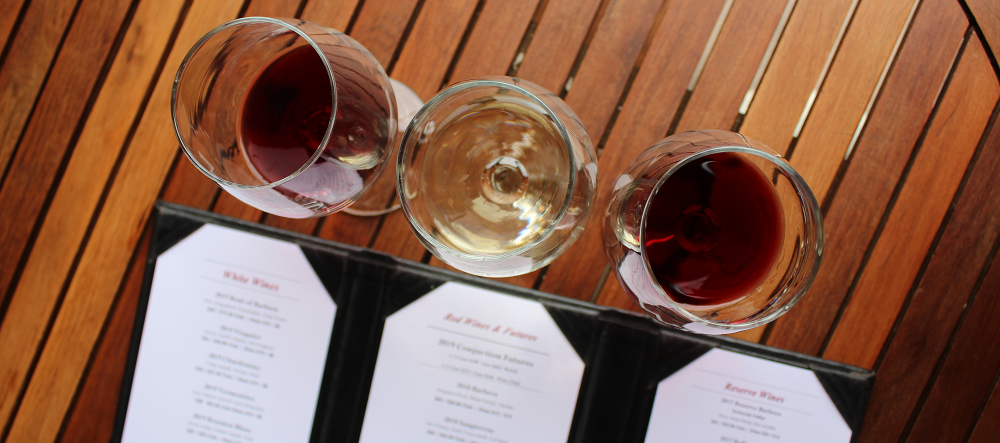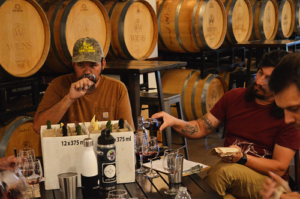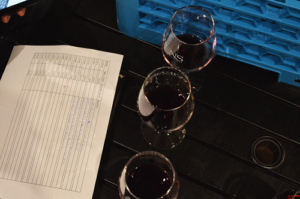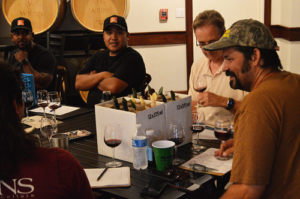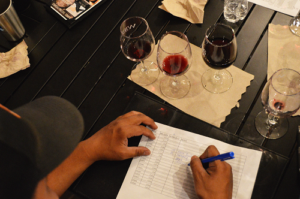Wine tasting is more than a mere act; it’s an art form and a scientific exploration rolled into one. The nuances of flavors, aromas, and textures in a glass of wine invite enthusiasts into a sensory realm where each sip tells a story. In this step-by-step guide, we delve into the intricacies of mastering the wine tasting technique, unlocking the secrets that lie within every bottle.
For wine enthusiasts, mastering the art of wine tasting is akin to unlocking a treasure chest of experiences. It enhances the enjoyment of wine, allowing individuals to appreciate the craftsmanship of winemakers and the unique characteristics of different varietals. Beyond personal enjoyment, understanding tasting techniques fosters a deeper connection with the world of wine, making each tasting session a journey of discovery and refinement.
Setting the Stage for Wine Tasting
The setting plays a pivotal role in the wine tasting experience. Whether in a cozy home setting or a professional tasting room, factors like lighting, temperature, and ambiance influence how the wine expresses itself. We explore the importance of choosing the right environment to maximize sensory perception and elevate the overall tasting experience.
Equipping oneself with the right tools enhances the precision of wine assessment. From proper glassware to corkscrews and spittoons, each tool serves a specific purpose. We outline the essential tools every wine enthusiast should have on hand to ensure a seamless and enjoyable tasting session.
Essential Tools for Wine Tasting
When it comes to wine tasting, having the right tools at your disposal can significantly elevate the entire experience. Here, we outline five essential tools that every wine enthusiast should have on hand to ensure a seamless and enjoyable tasting session:
- Wine Glasses: The choice of glassware may seem trivial, but it plays a crucial role in enhancing your wine tasting experience. Invest in a set of good-quality wine glasses with a tulip-shaped bowl. This shape allows the wine to breathe and directs the aromas toward your nose, enriching the sensory exploration.
- Corkscrew: A reliable corkscrew is a must-have tool for any wine lover. Whether you prefer a traditional waiter’s corkscrew, a winged corkscrew, or an electric opener, choose one that you find comfortable to use. This tool ensures the smooth and efficient extraction of the cork, preserving the wine’s integrity.
- Wine Pourer or Aerator: Enhance the aeration process by using a wine pourer or aerator. These tools expose the wine to air as it flows into the glass, allowing it to open up and release its aromas. This is particularly beneficial for young, bold red wines that may benefit from a bit of breathing before consumption.
- Spittoon: While spitting may seem counterintuitive, especially for those new to wine tasting, it’s a common practice among enthusiasts. A spittoon allows you to taste multiple wines without consuming excessive amounts. Opt for a discreet, well-designed spittoon to maintain the professionalism of the tasting environment.
- Wine Tasting Journal and Pen: A dedicated wine tasting journal is an invaluable tool for recording your impressions, preferences, and memorable experiences. Choose a journal with sections for each wine’s name, varietal, tasting notes, and overall rating. Keeping a record of your tastings enhances your ability to recall specific details and track your evolving preferences over time.
Having these essential tools on hand not only ensures that you’re well-prepared for any tasting occasion but also contributes to a more informed and enjoyable exploration of the diverse world of wine.
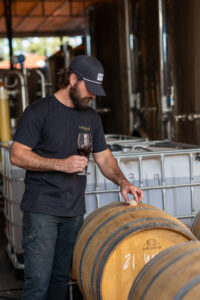
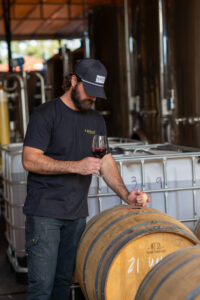
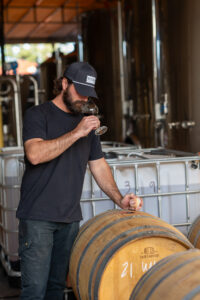
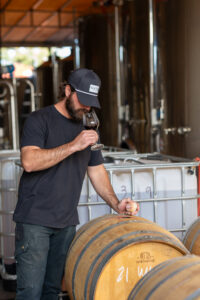
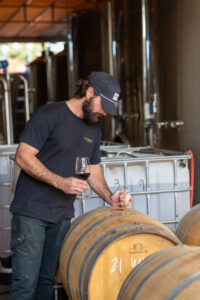
Understanding the Tasting Process
The Five S’s of Wine Tasting: See, Swirl, Sniff, Sip, Savor
The essence of wine tasting is encapsulated in the five S’s—See, Swirl, Sniff, Sip, Savor. This systematic approach ensures a thorough and holistic evaluation of the wine, guiding enthusiasts through a sensory journey that unveils the wine’s character and nuances.
- See: Begin the tasting process by visually assessing the wine’s color and clarity. Take note of the intensity of the color, whether it’s a vibrant red, golden yellow, or pale straw. Observe the transparency and viscosity of the wine, as these visual cues offer insights into its age and potential characteristics.
- Swirl: Swirling the wine in the glass is not just for show—it serves a vital purpose. The swirl introduces oxygen to the wine, allowing it to open up and release its aromas. Notice the “legs” or “tears” that form on the inside of the glass, providing clues about the wine’s body and alcohol content.
- Sniff: Bring the glass to your nose and inhale deeply to identify the wine’s aromas. Differentiate between primary aromas (from the grape variety), secondary aromas (from the fermentation process), and tertiary aromas (developed during aging). Take note of any fruit, floral, herbal, or spicy notes that contribute to the wine’s bouquet.
- Sip: Sipping the wine involves more than just taking a drink; it’s a deliberate act to assess its taste and texture. Pay attention to the initial impression, mid-palate flavors, and the finish. Note the balance of sweetness, acidity, and tannins, and consider how these elements interact on the palate.
- Savor: The final step involves savoring the wine’s aftertaste and finish. Reflect on the lingering flavors and how they evolve on the palate. Consider the length of the finish, whether it’s short and crisp or long and lingering.
Digging a Little Deeper…
Delving deeper into each step of the wine tasting process provides enthusiasts with a comprehensive understanding of the intricacies involved in assessing and appreciating different wines.
- See:
- Assessing Color and Clarity:
- Red Wines: From pale ruby to deep garnet, the color intensity may indicate the wine’s age and grape variety.
- White Wines: Ranging from pale straw to golden hues, color variations offer insights into the wine’s age and potential flavor profile.
- Understanding What Visual Cues Indicate:
- Legs: The viscosity of the wine, often associated with alcohol content. Slow-forming legs may indicate higher alcohol levels.
- Assessing Color and Clarity:
- Swirl:
- Techniques for Swirling Wine:
- Hold the base of the glass and gently rotate it in a circular motion on a flat surface.
- The goal is to coat the inside of the glass with a thin film of wine.
- Identifying Aromas and Bouquet:
- Swirling enhances aeration, allowing the wine’s aromas to be more pronounced.
- Bouquet refers to the combination of scents that contribute to the overall aromatic profile.
- Techniques for Swirling Wine:
- Sniff:
- Identifying Aromas and Bouquet (Continued):
- Primary Aromas: Derived from the grape variety, such as fruity notes in a Cabernet Sauvignon.
- Secondary Aromas: Result from the winemaking process, including fermentation aromas.
- Tertiary Aromas: Developed during aging, showcasing characteristics like vanilla in oaked wines.
- Identifying Aromas and Bouquet (Continued):
- Sip:
- Proper Sipping Technique:
- Take a small sip, allowing the wine to coat the entire palate.
- Consider the initial attack, mid-palate flavors, and the evolution of taste.
- Identifying Flavors and Mouthfeel:
- Note the presence of fruit flavors, whether it’s berries, citrus, or tropical fruit.
- Assess the level of sweetness, acidity, and tannins, which contribute to the wine’s overall structure.
- Proper Sipping Technique:
- Savor:
- Understanding Aftertaste and Finish:
- Aftertaste refers to the flavors that linger after swallowing.
- Evaluate the length and intensity of the finish—short, medium, or long.
- Overall Impression and Balance:
- Consider the harmonious balance of sweetness, acidity, and tannins.
- Form an overall impression, reflecting on the wine’s structure, complexity, and potential aging potential.
- Understanding Aftertaste and Finish:
Understanding the nuances of each phase in the tasting process empowers wine enthusiasts to dissect and appreciate the complexities of different wines. This detailed approach transforms wine tasting from a casual act into a profound exploration of the senses and the artistry behind each bottle.
Visual Examination: See
Assessing Color and Clarity
Visual examination begins with assessing the wine’s color and clarity. We explore how the hue and transparency offer valuable insights into the wine’s age, grape variety, and even potential faults. Understanding visual cues sets the stage for a more informed tasting experience.
Understanding What Visual Cues Indicate
Beyond aesthetics, the visual cues in a glass of wine convey essential information. We unravel the meanings behind different colors, opacities, and the “legs” that form on the glass, empowering enthusiasts to decode the story the wine tells before the first sip.
Aeration and Aroma: Swirl and Sniff
Techniques for Swirling Wine
Swirling wine isn’t just a flourish; it serves a crucial purpose in unlocking the wine’s aromatic potential. We discuss techniques for the perfect swirl, allowing the wine to interact with air and release its full spectrum of aromas.
Identifying Aromas and Bouquet
The swirling sets the stage for the next step—sniffing. We guide enthusiasts on identifying aromas and bouquet, exploring the vast array of scents that range from fruity and floral to spicy and earthy. Developing a keen sense of smell enhances the overall tasting experience.
The Tasting: Sip
Proper Sipping Technique
Taking a sip might seem straightforward, but there’s an art to it. We delve into the proper sipping technique, emphasizing the importance of letting the wine coat the palate and exploring the nuances of flavors and textures.
Identifying Flavors and Mouthfeel
With the wine on the palate, we guide enthusiasts through the process of identifying flavors and assessing mouthfeel. From the initial attack to the mid-palate and the finish, each moment offers clues about the grape, the winemaking process, and the wine’s overall character.
Evaluating the Wine: Savor
Understanding Aftertaste and Finish
As the sip concludes, the aftertaste and finish come into play. We explore the significance of these elements, unraveling how the lingering impressions contribute to the overall evaluation of the wine.
Overall Impression and Balance
Beyond individual components, evaluating the wine involves forming an overall impression. We discuss how enthusiasts can assess the balance of the wine, ensuring that acidity, tannins, and fruit flavors harmonize for a well-rounded experience.
Tasting Notes and Journaling
How to Record Tasting Notes
Recording tasting notes isn’t just for connoisseurs; it’s a valuable practice for every wine enthusiast. We outline an approachable method for jotting down observations, ensuring that personal experiences and preferences are captured for future reference.
Building a Personal Wine Journal
A wine journal becomes a companion on the journey of exploration. We offer tips on building a personal wine journal, including what to include, organizing entries, and how journaling contributes to ongoing learning and refinement.
Blind Tasting and Vertical Tasting
For wine enthusiasts yearning to transcend the ordinary and delve into the depths of tasting expertise, advanced techniques such as blind tasting and vertical tasting provide unparalleled insights into the world of wine. We blind taste wine here at Wiens Cellars all the time; Our own wines against themselves, against other wineries & even to create special bottles like our Reserve Red Blend. In fact, our bi-annual Wine Blending Party focuses on just that skill alone. Let’s get in to why it’s so important.
- Blind Tasting
-
- Setting Aside Preconceptions:
- Blind tasting involves assessing a wine without any knowledge of its identity—grape variety, region, or producer.
- By setting aside preconceptions, tasters focus solely on the sensory experience, allowing the true essence of the wine to emerge.
- Revealing the True Essence:
- Participants are presented with wines concealed in opaque containers, challenging them to rely solely on their senses.
- This technique hones perceptual skills, fostering a deeper understanding of personal preferences and the ability to identify varietals and styles purely through taste and aroma.
- Setting Aside Preconceptions:
- Vertical Tasting
-
- Delving into Vintages:
- Vertical tasting involves sampling different vintages of the same wine.
- By exploring a winery’s evolution over multiple years, tasters gain insights into aging potential, stylistic consistency, and the impact of climatic variations on wine expression.
- Variations in Expression:
- Tasting wines from consecutive years showcases how environmental factors, winemaking techniques, and aging influence flavor profiles.
- Enthusiasts can identify nuances in aroma, taste, and structure, appreciating the subtleties that make each vintage unique.
- Delving into Vintages:
Exploring Varietal and Regional Differences
Unlocking the full spectrum of wine appreciation requires a journey into the intricacies of grape varietals and the influence of different regions. Here, we guide enthusiasts through the exploration of varietal and regional differences, paving the way for a deeper understanding of the diverse world of wine.
- Varietal Differences
- Distinctive Grape Expressions:
- Grape varietals contribute unique flavors, aromas, and characteristics to wines.
- Through focused tastings, enthusiasts can discern the nuances between varietals, distinguishing, for example, the boldness of Cabernet Sauvignon from the delicacy of Pinot Noir.
- Identifying Signature Traits:
- Understanding varietal characteristics involves recognizing common traits such as the herbal notes in Sauvignon Blanc or the dark fruit tones in Syrah.
- Enthusiasts develop a palate attuned to the subtleties that define each grape variety, enriching their ability to select wines aligned with personal preferences.
- Regional Differences
- Terroir’s Influence:
- Regional influences, often encapsulated by the term terroir, play a pivotal role in shaping a wine’s identity.
- Exploring wines from different regions reveals how factors like soil, climate, and topography impart unique qualities, creating a sense of place in each bottle.
- Appreciating Diversity:
- Enthusiasts can embark on a geographical exploration, sampling wines from renowned regions like Bordeaux, Napa Valley, or Tuscany.
- This journey allows for a profound appreciation of how regional nuances contribute to the kaleidoscope of flavors and styles found in the global wine landscape.
- Terroir’s Influence:
- Distinctive Grape Expressions:
By embracing advanced tasting techniques and delving into varietal and regional differences, enthusiasts not only refine their palates but also deepen their connection to the rich tapestry of wines that grace glasses around the world. These experiences foster a profound appreciation for the artistry of winemaking, making each tasting session an enlightening and rewarding adventure.
The Journey of Wine Tasting Expertise
Mastering the wine tasting technique is a continuous journey—one of refinement, exploration, and personal growth. As enthusiasts hone their skills, each glass becomes an opportunity to deepen their understanding and appreciation of the world of wine.
In conclusion, the world of wine is ever-evolving, offering new varietals, vintages, and experiences. We emphasize the need for continuous learning and exploration, encouraging enthusiasts to embrace the journey with enthusiasm and an open palate. The more one learns, the more rewarding the world of wine tasting becomes, making each sip a moment of discovery and delight.
